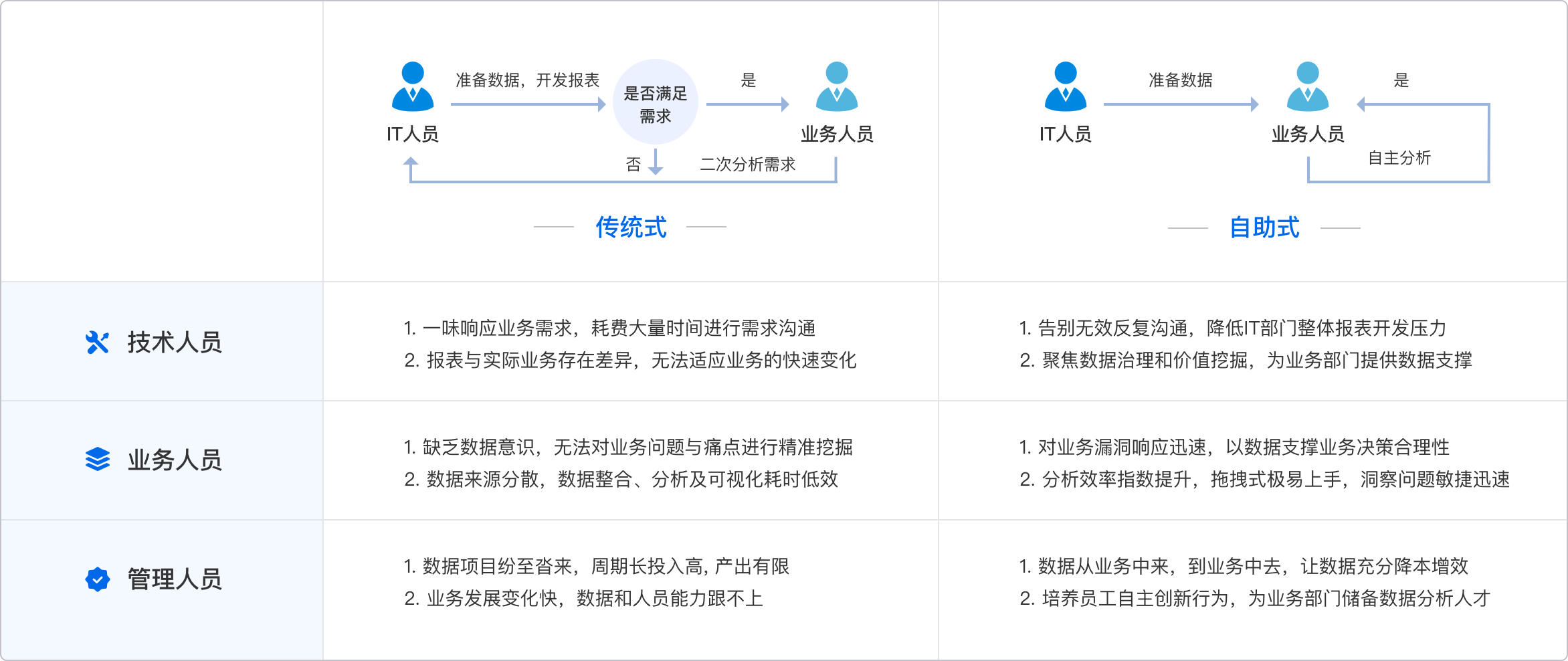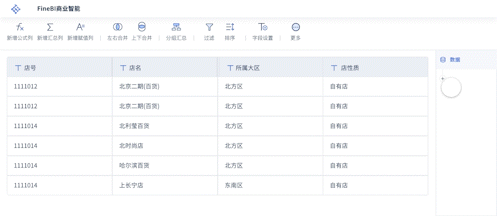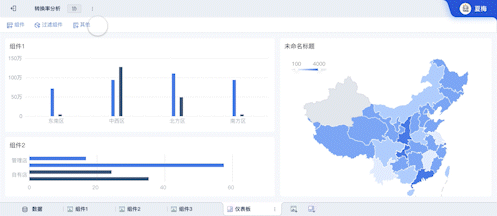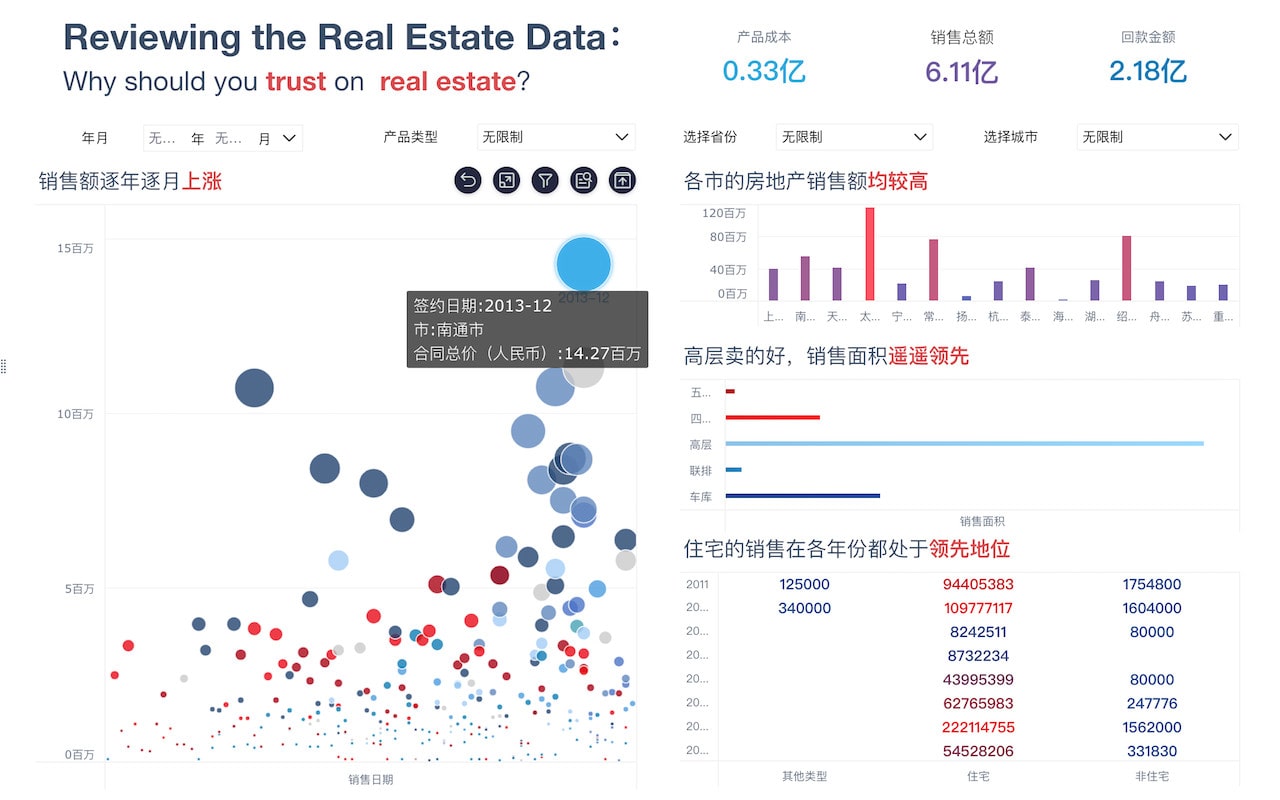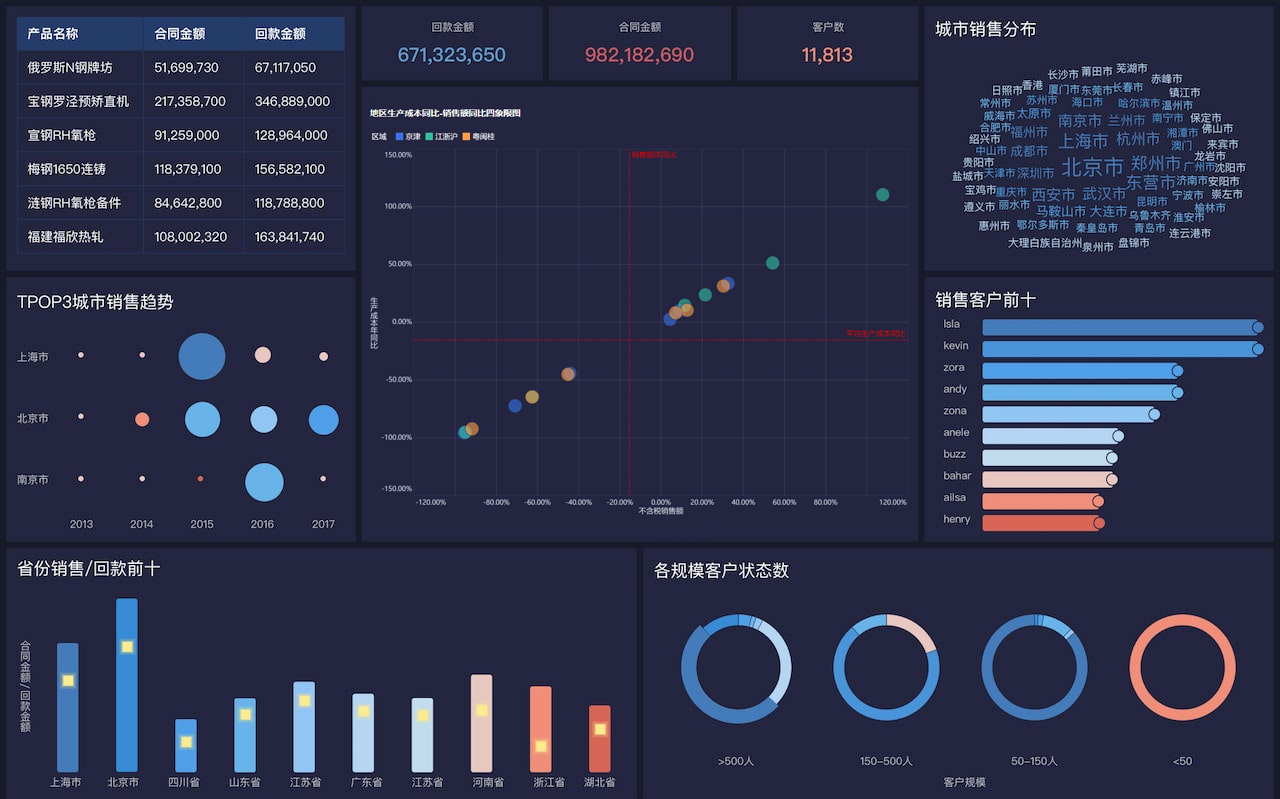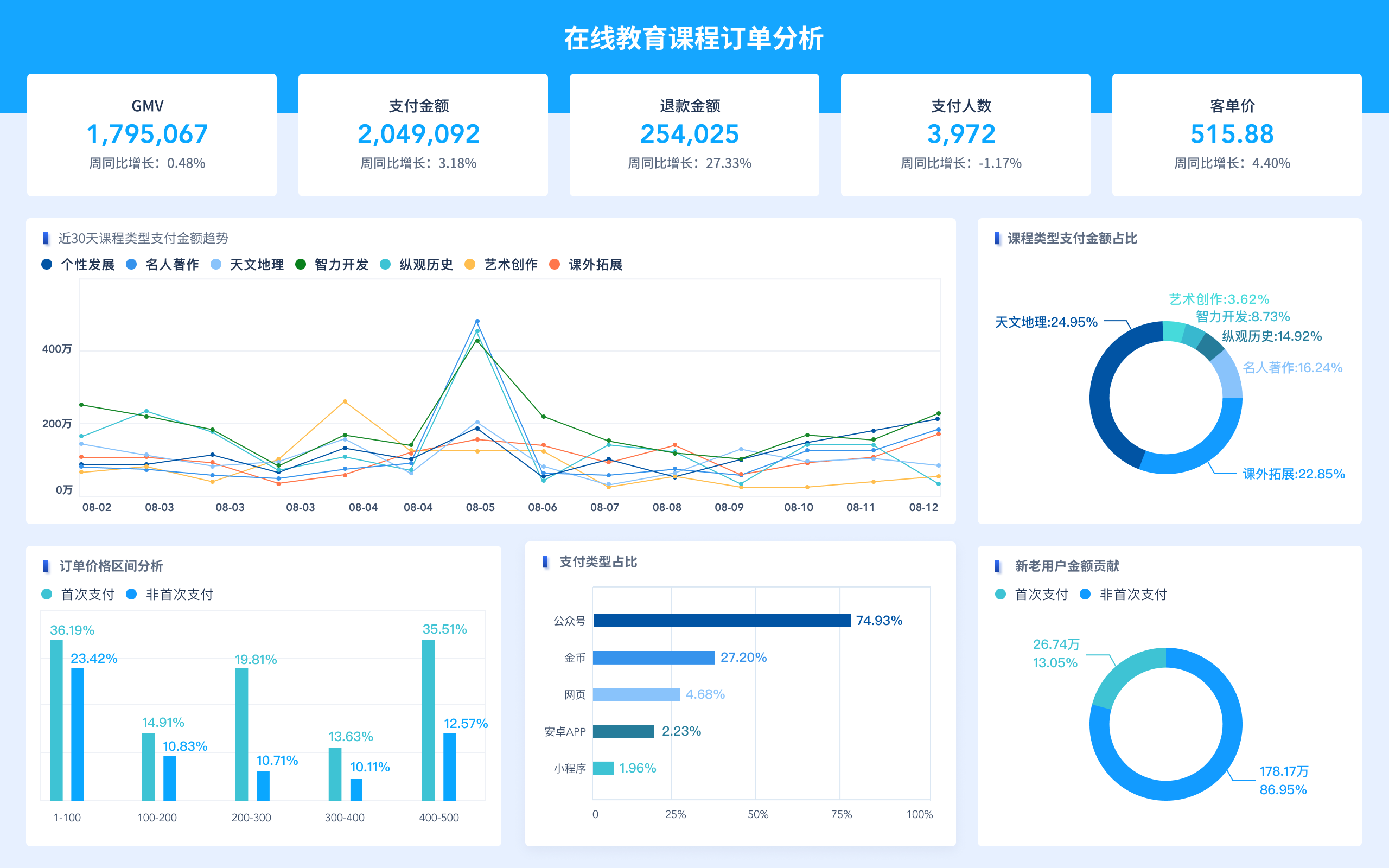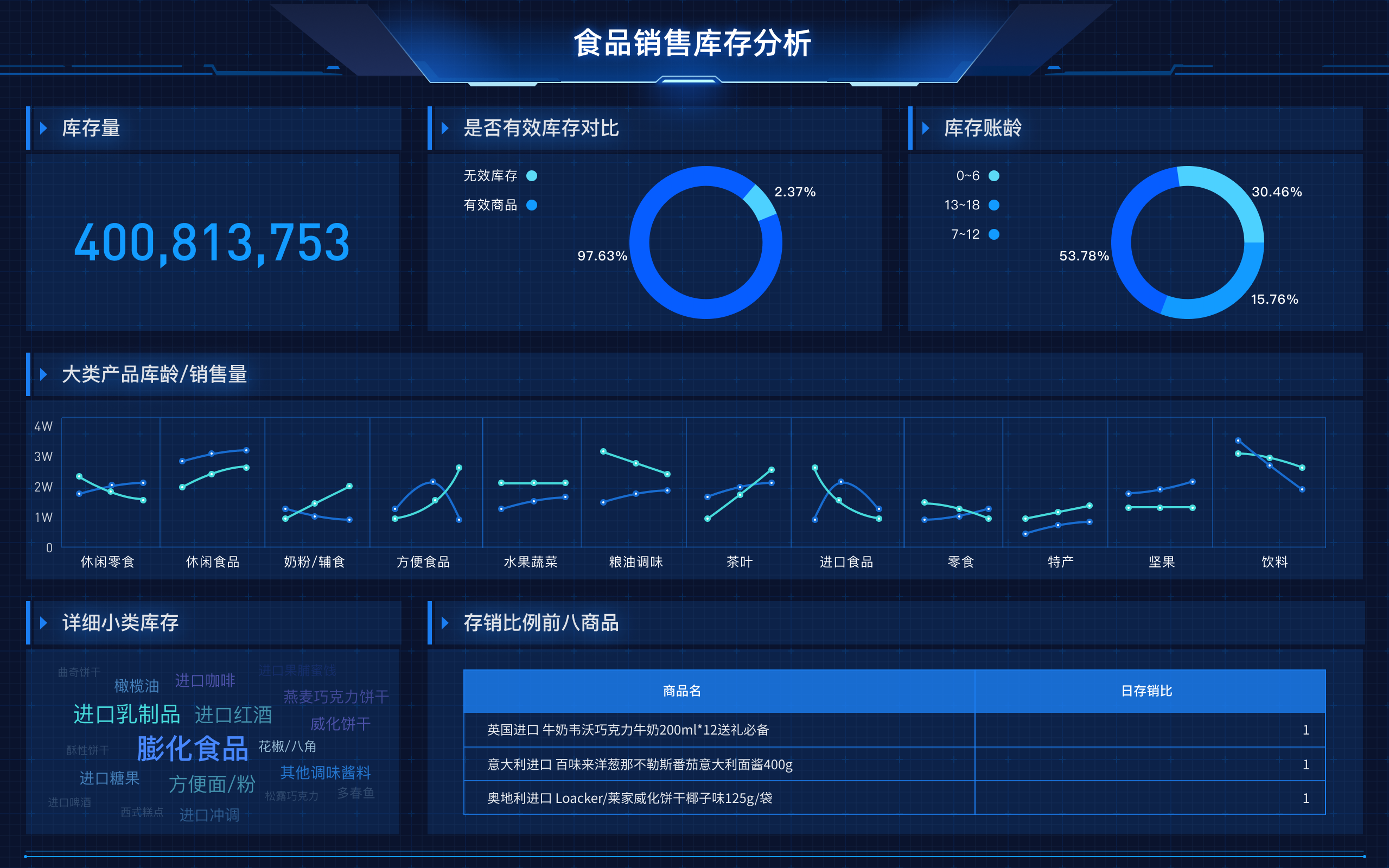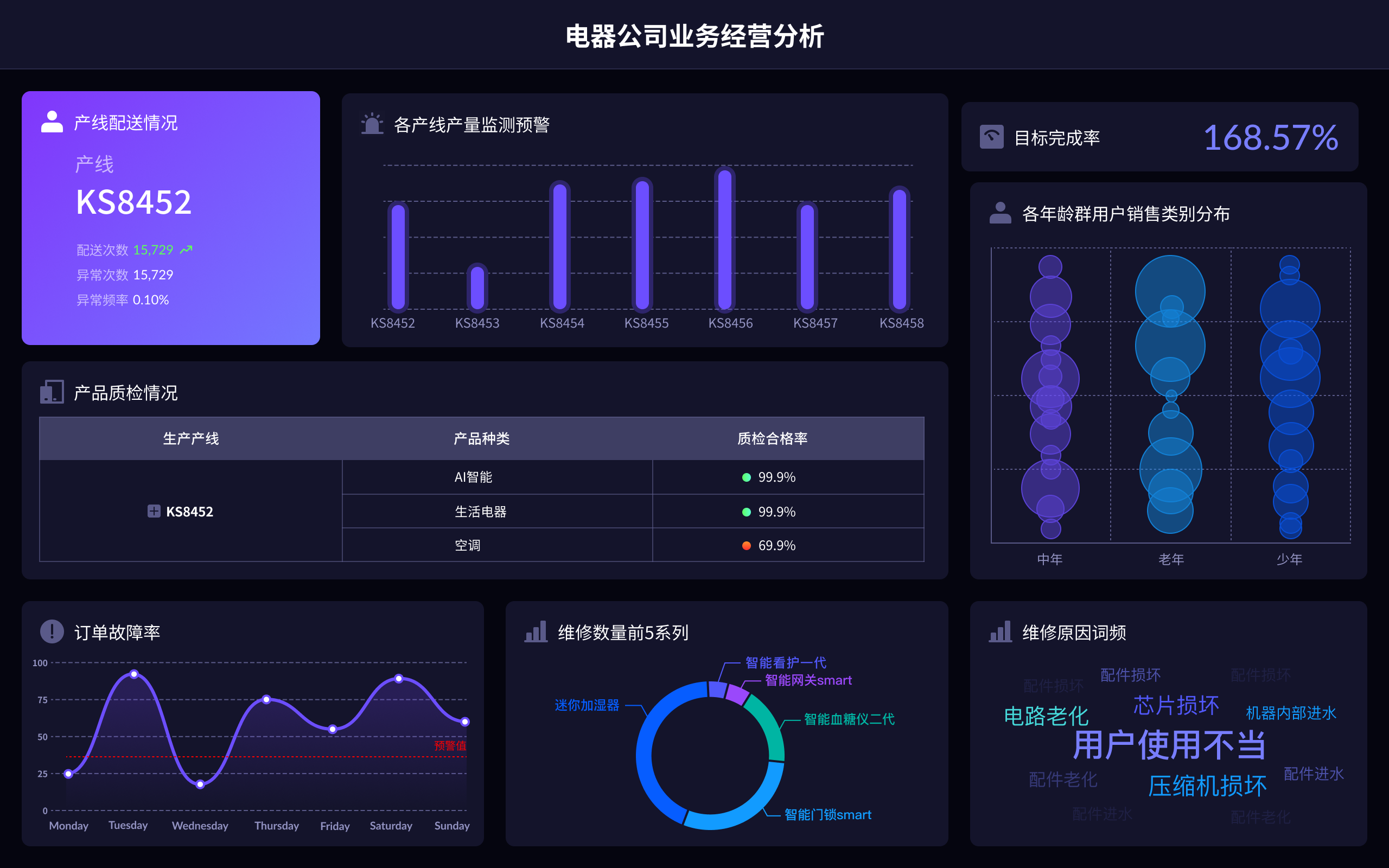
在IT行业中进行数据分析的可行性建议包括:增强决策支持、优化资源分配、提升客户满意度、识别市场趋势、改进运营效率、降低成本、增加盈利、提高竞争力。特别是,通过增强决策支持,企业可以利用数据分析来做出更加准确和及时的业务决策。通过分析历史数据和预测未来趋势,管理层能够更好地了解市场动态,识别潜在的机会和风险,从而制定更加科学的策略,提升整体业务表现。
一、增强决策支持
在IT行业,数据分析的重要性不言而喻。企业可以通过FineBI等先进的BI工具,收集、处理和分析大量数据,帮助管理层做出明智的决策。FineBI是一款专业的商业智能工具,提供了强大的数据分析功能。通过FineBI,企业可以整合各种数据源,进行深度数据挖掘,生成详细的报表和可视化图表,帮助决策者更好地理解复杂的数据关系和业务状况。官网: https://s.fanruan.com/f459r;。
二、优化资源分配
优化资源分配是数据分析在IT行业中的另一大优势。通过数据分析,企业可以识别哪些部门或项目需要更多的资源支持,哪些资源可以重新分配,从而提高整体运营效率。FineBI提供了强大的数据整合和分析能力,使企业能够实时监控各项资源的使用情况,优化资源配置,减少浪费,提高投资回报率。
三、提升客户满意度
在竞争激烈的IT行业,提升客户满意度至关重要。通过数据分析,企业可以深入了解客户需求和行为模式,提供更加个性化的服务和产品。FineBI的客户分析功能可以帮助企业识别客户的偏好和需求,制定针对性的营销策略,提高客户满意度和忠诚度。
四、识别市场趋势
市场趋势的识别对企业的战略规划至关重要。通过FineBI等数据分析工具,企业可以实时跟踪市场动态,识别潜在的市场机会和风险。FineBI提供了强大的数据可视化和预测分析功能,帮助企业快速掌握市场趋势,制定更加科学的市场策略。
五、改进运营效率
改进运营效率是数据分析在IT行业中的重要应用之一。通过FineBI,企业可以实时监控各项运营指标,识别运营中的瓶颈和问题,及时采取改进措施。FineBI的自动化报表生成和数据可视化功能,使管理层能够快速获取运营数据,提高决策效率,优化业务流程。
六、降低成本
成本控制是企业提高盈利能力的关键因素。通过数据分析,企业可以识别各项成本的构成和变化趋势,制定有效的成本控制策略。FineBI提供了详细的成本分析报表和图表,帮助企业全面了解成本结构,识别节约潜力,降低运营成本。
七、增加盈利
通过FineBI等数据分析工具,企业可以识别盈利增长的潜在机会。通过分析销售数据、客户行为数据和市场数据,企业可以制定更加有效的销售和营销策略,提高产品和服务的盈利能力。FineBI的强大数据分析能力,使企业能够全面了解业务表现,制定科学的盈利增长计划。
八、提高竞争力
在竞争激烈的IT行业,提高竞争力是企业生存和发展的关键。通过FineBI等数据分析工具,企业可以实时监控竞争对手的动态,了解市场竞争格局,制定针对性的竞争策略。FineBI提供了全面的市场分析功能,帮助企业识别竞争优势和劣势,提高市场竞争力。
通过FineBI等先进的数据分析工具,IT企业可以全面提升业务表现,优化资源配置,降低成本,提高盈利能力和市场竞争力。FineBI为企业提供了强大的数据整合、分析和可视化功能,帮助企业在激烈的市场竞争中保持领先地位。官网: https://s.fanruan.com/f459r;。
相关问答FAQs:
FAQs about Feasibility Recommendations for IT Industry Data Analysis
1. What are the key considerations when assessing the feasibility of data analysis in the IT industry?
When evaluating the feasibility of data analysis in the IT sector, several critical factors should be considered:
-
Data Availability and Quality: Assess the availability and quality of data sources within the IT organization. This includes structured data from databases, logs, and applications, as well as unstructured data from sources like emails, documents, and social media. The feasibility depends significantly on the completeness, accuracy, and consistency of these data sets.
-
Technological Infrastructure: Evaluate the IT infrastructure in terms of its capability to handle data analysis tasks. This includes computing resources (servers, storage), networking infrastructure (bandwidth, latency), and software tools (data processing platforms, analytics software). Ensuring that the infrastructure can support the volume and complexity of data analysis tasks is crucial for feasibility.
-
Skills and Expertise: Consider the skill sets and expertise of the IT team members who will be involved in data analysis projects. Feasibility increases when there are skilled professionals in data management, statistics, machine learning, and domain-specific knowledge within the IT team.
-
Regulatory and Security Compliance: Compliance with data protection regulations (such as GDPR, HIPAA) and ensuring data security are essential. Feasibility depends on the IT organization's ability to adhere to these regulations and implement robust security measures to protect sensitive data.
-
Cost and Resource Allocation: Assess the financial feasibility of data analysis initiatives. This includes costs associated with acquiring and maintaining infrastructure, licensing software, training personnel, and hiring external expertise if needed. Resource allocation in terms of time and personnel availability also plays a crucial role in determining feasibility.
2. How can IT companies effectively assess the potential benefits of implementing data analysis?
To effectively assess the potential benefits of data analysis implementation in IT companies, the following steps can be taken:
-
Identify Business Objectives: Clearly define the business objectives that data analysis aims to achieve. This could include improving operational efficiency, enhancing customer experience, optimizing resource allocation, or gaining competitive insights. Aligning data analysis initiatives with strategic business goals helps in quantifying potential benefits.
-
Define Key Performance Indicators (KPIs): Establish relevant KPIs that will be used to measure the success and impact of data analysis initiatives. KPIs could include metrics such as cost savings, revenue growth, customer satisfaction scores, or productivity improvements. Quantifying expected improvements through KPIs enables a clearer assessment of potential benefits.
-
Conduct Proof-of-Concept (POC) Projects: Implement small-scale POC projects to demonstrate the feasibility and potential benefits of data analysis. POCs allow IT companies to test hypotheses, evaluate technical feasibility, and showcase tangible outcomes to stakeholders. Successful POCs build confidence and support for broader implementation.
-
Perform Cost-Benefit Analysis: Conduct a comprehensive cost-benefit analysis to compare the expected benefits of data analysis against the associated costs. Consider both tangible benefits (such as revenue increase or cost savings) and intangible benefits (like improved decision-making or enhanced customer satisfaction). This analysis helps in making informed decisions about investment in data analysis initiatives.
-
Benchmark Against Industry Standards: Compare the potential benefits of data analysis initiatives against industry benchmarks and best practices. Understanding what similar organizations have achieved through data analysis provides context and realistic expectations for potential benefits.
3. What are some common challenges and mitigation strategies when implementing data analysis in the IT industry?
Implementing data analysis in the IT industry comes with its share of challenges, along with strategies to mitigate them:
-
Data Silos and Integration: Challenge: Data scattered across different systems and departments can hinder analysis. Mitigation: Implement data integration strategies like data warehousing or use of integration platforms to consolidate data for analysis.
-
Complexity of Data: Challenge: Dealing with diverse data types (structured, unstructured) and varying quality. Mitigation: Use data cleansing and preprocessing techniques to ensure data quality before analysis. Employ advanced analytics tools for handling complex data structures.
-
Skill Shortage: Challenge: Shortage of skilled data analysts, data scientists, and IT professionals proficient in data analysis. Mitigation: Invest in training programs to upskill existing IT staff. Collaborate with educational institutions for talent acquisition. Consider outsourcing for specialized expertise if needed.
-
Privacy and Security Concerns: Challenge: Ensuring data privacy and protection while conducting data analysis. Mitigation: Implement robust data security measures, anonymize sensitive data where possible, and adhere to regulatory compliance requirements (GDPR, CCPA).
-
Resistance to Change: Challenge: Resistance from employees or stakeholders accustomed to traditional decision-making methods. Mitigation: Foster a data-driven culture through leadership buy-in, communication of benefits, and demonstrating success through pilot projects.
By addressing these challenges proactively and implementing effective mitigation strategies, IT companies can enhance the feasibility and success of data analysis initiatives, ultimately leveraging data as a strategic asset for competitive advantage and operational excellence.
本文内容通过AI工具匹配关键字智能整合而成,仅供参考,帆软不对内容的真实、准确或完整作任何形式的承诺。具体产品功能请以帆软官方帮助文档为准,或联系您的对接销售进行咨询。如有其他问题,您可以通过联系blog@fanruan.com进行反馈,帆软收到您的反馈后将及时答复和处理。


